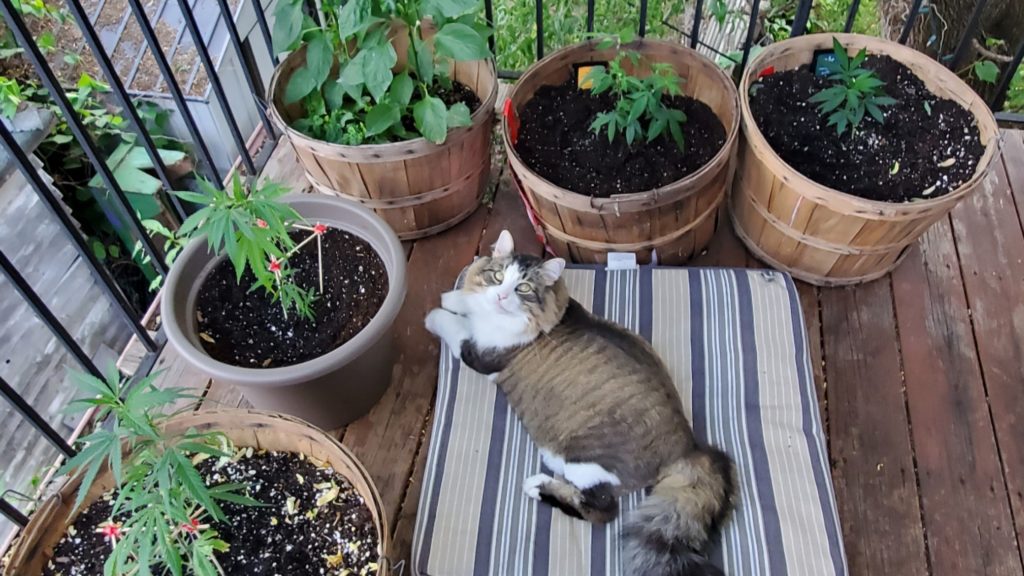I tried to grow cannabis for the first time last year and was thoroughly trounced by everyone else in my neighbourhood, which in one way felt awesome — it was cool to see how much my neighbours love their weed — but was also a bit of a bummer.
You’re outside, there’s a connection to nature, there are the challenges of warding off pests and disease and curious raccoons.
In the beginning, they looked more like sad bonsai trees than pot plants.
I transplanted them into new pots and dropped about a hundred dollars on bags of premium potting soil which the garden center employee assured me would give the plants their best chance to thrive .
I also acquired two more seedlings, just in case.
Across the street, another neighbour, who recently moved in, had four bushy plants on his balcony, waving to the street in the wind.
From the deck, I could spot another few plants down the alley of backyards, each one in varying states of growth, but all serving as connective tissue as another pandemic summer began to unfold.
Last year, I often didn’t give the plants a drink until the evening.
I grew jealous of the raised beds his plants sprouted from, their roots free to spread further and deeper into the soil below.
He didn’t have any details about lineage, flowering time or anything else, but it didn’t seem to slow them down.
It was touch and go early in the season and I was skeptical the plants would survive, but ever slowly they grew healthier and greener and larger and prettier.
And though my cat showed no interest in the plants, I thought her occasional presence on the deck might deter wildlife from visiting.
Fortunately, the squirrels also found the potato vines and opted to munch on those leaves and roots instead.
Around this time, I noticed an influx of bees in the area, which would jump from plant to plant on the deck, buzzing with a happy hum.
In a study published in Environmental Entomology last year, researchers tracked 16 different types of bees that visited cannabis farms in New York, with the tallest plants attracting the most attention.
Remembering how constant the battle was last summer to keep the fungus at bay, I quickly began treating it with a diluted milk spray, which seemed to help, though it never fully conquered the issue.
Still, the plant that became infected was also performing the best.
Soon after that, the plants around the neighbourhood began to disappear, one by one, their short lives already over.
Despite one plant lost to mildew, the others fared well, even the wispy ones.
Gardening is time well spent, and even though we’d only exchanged a few words over the course of the summer, I felt closer to my neighbours, who, from a distance, had shared in on this experience with me.
I strung up a few lines of twine, hung the plants over, and waited for the buds to dry.
Later that week, I learned my neighbours are soon moving out of the province.
We have enabled email notifications—you will now receive an email if you receive a reply to your comment, there is an update to a comment thread you follow or if a user you follow comments.
This website uses cookies to personalize your content , and allows us to analyze our traffic.
